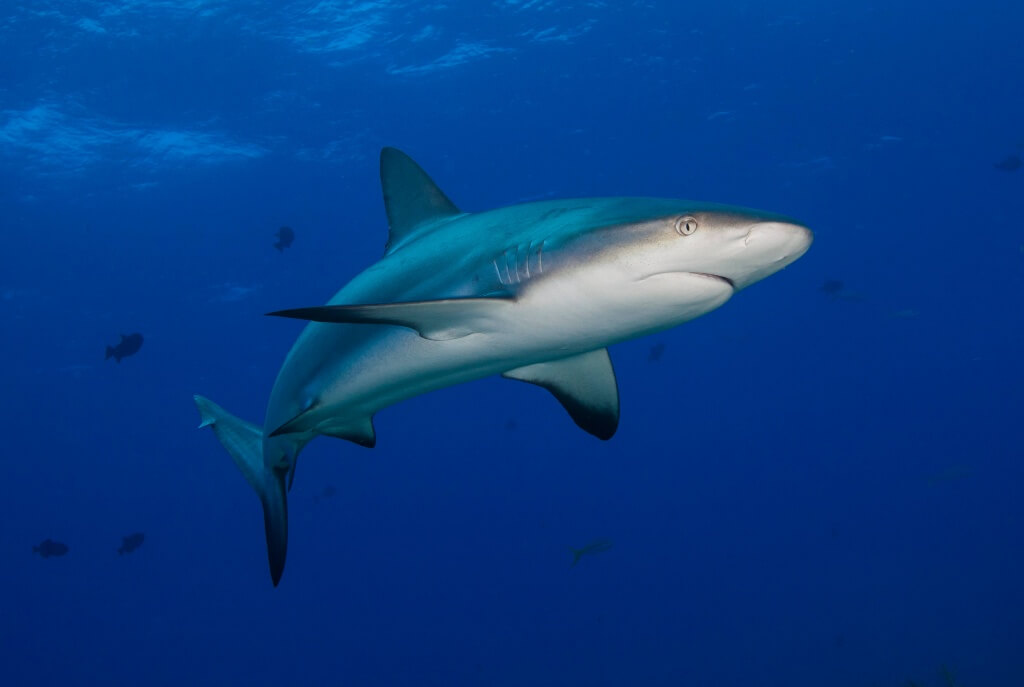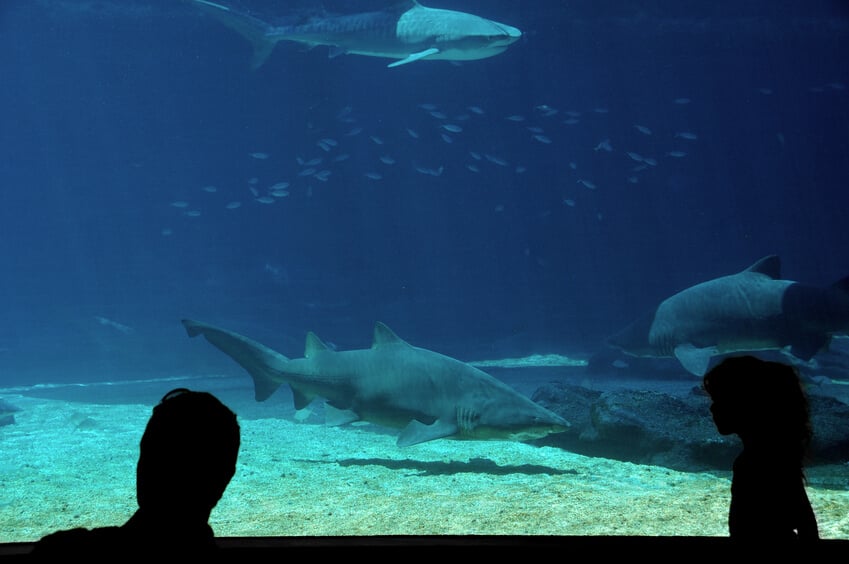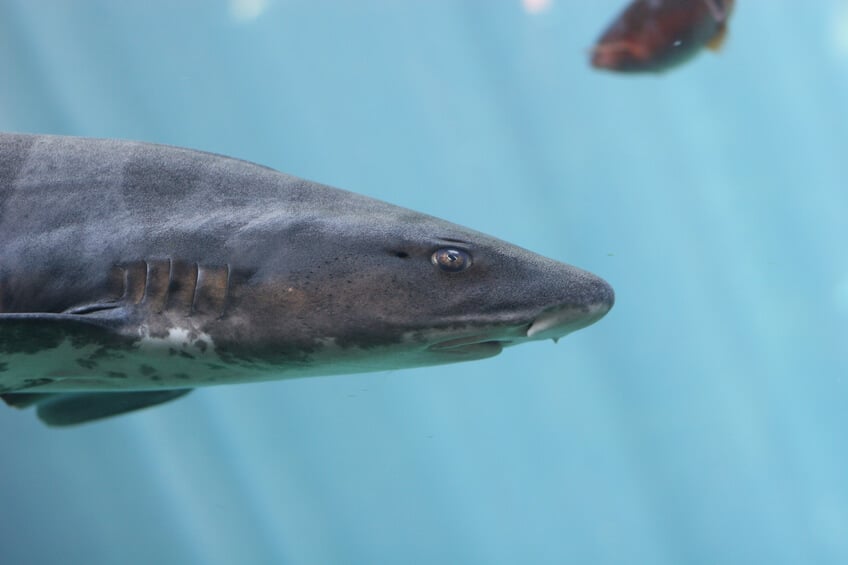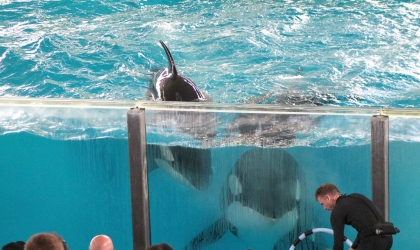SeaWorld’s newest attractions in Orlando, Florida, may focus on sharks and rays, but the company hasn’t done anything to focus on their well-being.
Tourists to the embattled theme park can now swim with sharks inside a tiny tank that’s a fraction of the size of these animals’ natural habitat.
If swimming with sharks inside the equivalent of a bathtub isn’t bad enough, the rotting-garbage-under-the-hot-sun of a company known as SeaWorld also unveiled a ray hand-feeding experience in which staff actually encourage children to have a perverted—and even harmful—relationship with nature. Hasn’t SeaWorld learned anything from its previous public-feeding failures?
There are many reasons why no sharks or rays should ever be imprisoned at SeaWorld—or any other park or aquarium. Here are just some of them:
Sharks Are Sensitive
 © iStock.com/cdascher
© iStock.com/cdascherSharks use between eight and 13 senses, but small tanks and noisy crowds may interfere with them, frustrating and confusing the animals.
Sharks Need Space
While sharks in the wild may travel up to 45 miles in a day (and some species have to swim constantly in order to breathe), sharks in captivity swim in constant circles, and some sustain injuries to their noses as they rub against the sides of the tanks.
Keeping Sharks in Tanks Isn’t Conservation
 © iStock.com/Heinrich Volschenk
© iStock.com/Heinrich VolschenkKeeping sharks in captivity may actually be detrimental to conservation efforts. Seeing animals in unnatural settings that degrade and exploit them teaches the public that they are ours to dominate and gives the public the false impression that the species is thriving in the wild and that it’s acceptable to take these animals from their natural habitat.
Marine Parks Can Mean Death for Sharks and Rays
Trending: Dozens of stingrays die at zoo in Chicago http://t.co/PXJ3otsgKt pic.twitter.com/S05WnTH86J
— KITV4 (@KITV4) July 13, 2015
There have been numerous incidents in which sharks and rays have died because of simple technical failures. At SeaWorld, sixteen sharks died after workers waited too long to shut off water being pumped from Mission Bay into the aquariums. Fifty-four stingrays reportedly died at a zoo in Chicago because the oxygen levels in the tank fell. A similar incident killed more than 40 stingrays at the Calgary Zoo. At a Texas aquarium, hundreds of fish, including a tiger shark, died when workers added medicine to the tanks in an attempt to fight parasites.
Sharks Don’t Last in Captivity
In 1978, SeaWorld reportedly attempted to display a couple of wild-caught shortfin mako sharks at its Shark Encounter Exhibit. The animals reportedly died within days, after running into the walls of the enclosure. Recently, a great white shark died after just three days in a Japanese aquarium. These incidents aren’t isolated: Sharks don’t thrive in tanks.
Sharks Are the Real Victims
baby #mako #shark #bycatch in N Italy. CR Endangered in Med.See poster on minimakos EEA2014 https://t.co/toQXgbqNqm pic.twitter.com/d0rsjl5XXF
— MedSharks (@MedSharks) May 18, 2016
Marine parks often market the ferocity of sharks to entice a curious public, but only five people were killed by sharks in 2015. Meanwhile, humans kill approximately 100 million sharks worldwide every year because of bycatch, illegal fishing, and the demand for shark fins. Despite the negative consequences for sharks, aquariums, including SeaWorld, continue to serve fish. SeaWorld claims to serve only so-called ‘sustainable seafood,’ but like ‘humane meat,’ this is an intentionally misleading marketing term—all fishing inherently harms sea life.”
Sharks Are Shy
 © iStock.com/Sashi Ono
© iStock.com/Sashi OnoMany sharks are naturally shy, so encouraging strange, boisterous children and adults to invade their personal space is bound to unsettle the animals. Sharks and stingrays in “touch tanks” and “swim with” encounters are forced into close contact with tourists and can easily be injured, especially since stingrays can’t defend themselves when their barbs have been trimmed or removed, as they are for these exhibits.
SeaWorld’s Leadership Is Questionable
Before he became the CEO of SeaWorld, Joel Manby was head of Kentucky’s Newport Aquarium, which started a captive-breeding program for wild-caught shark rays that resulted in numerous deaths. One shark ray died five days after arriving at the facility as the result of a “mating injury,” and an entire litter of six shark ray pups died within a month of their births.
There are a lot of reasons why sharks and rays shouldn’t be kept in captivity, and no amount of fanfare in the form of a roller coaster will change that. Please don’t support this inhumane marketing ploy, and tell your friends why they shouldn’t, either.
Learn more about cruelty at SeaWorld on The PETA Podcast:
Listen to more episodes on iTunes, Stitcher, and Spotify! Subscribe for new episodes.
What You Can Do
Help all the animals imprisoned by SeaWorld today by taking a moment to ask the company to develop a firm and rapid plan to release them into sanctuaries where they will be given a semblance of the natural life that they have been denied for so long.




